Life imitates art: “Hilton will design suites and sleeping quarters for Voyager’s private Starlab space station.” As you recall, Space Station V from 2001: A Space Odyssey had a Hilton on board.


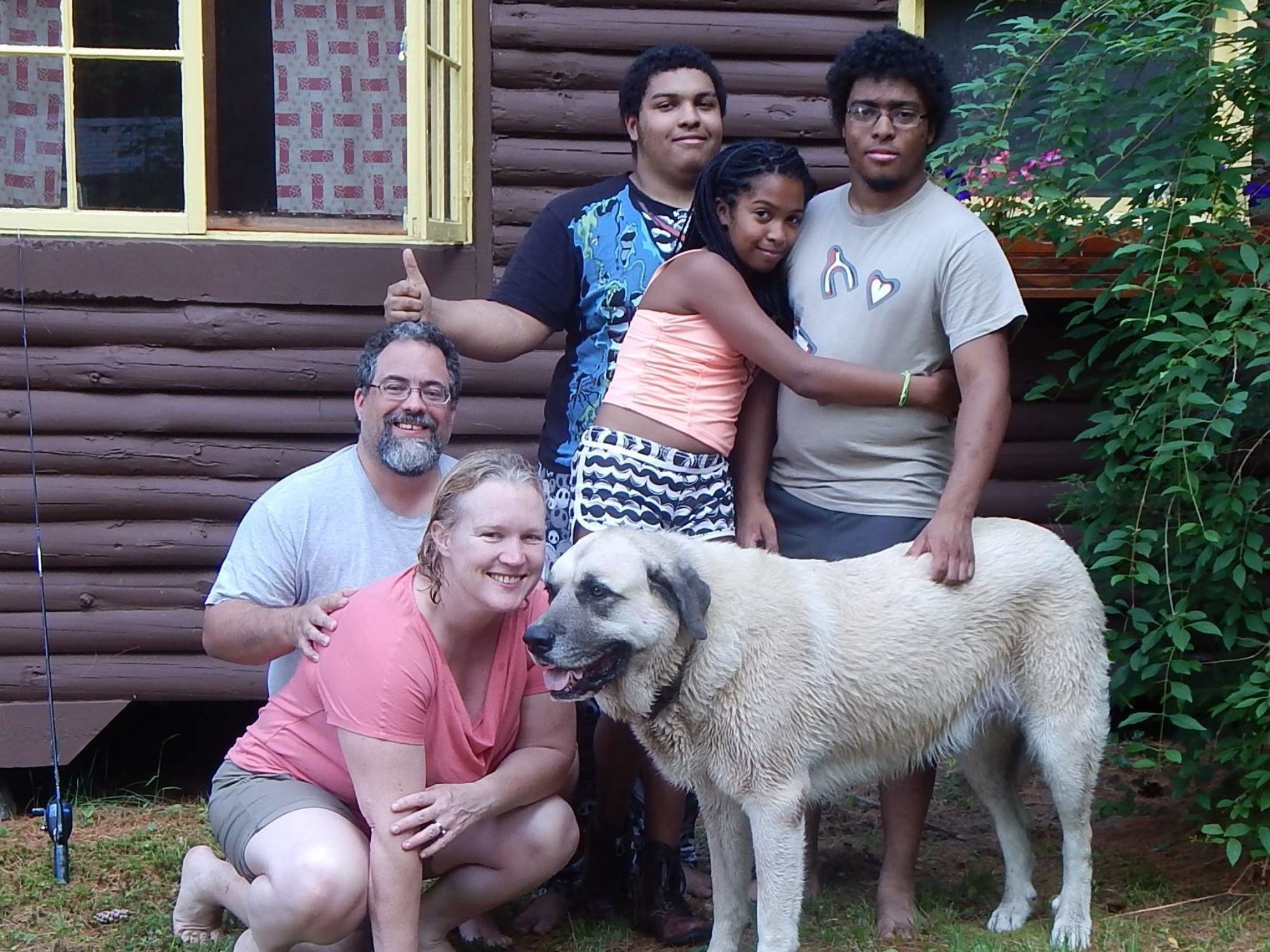
Welcome to the Wilcox Family weB LOG, your source for the latest Wilcox news, anecdotes, and rants; and, as Jack Benny quipped on his first radio show (March 29, 1932), “There will be a slight pause while you say, ‘Who cares?’â€â€
Life imitates art: “Hilton will design suites and sleeping quarters for Voyager’s private Starlab space station.” As you recall, Space Station V from 2001: A Space Odyssey had a Hilton on board.


Took Sarah ‘s father out planetgazing (finally) to the exotic location of his driveway.

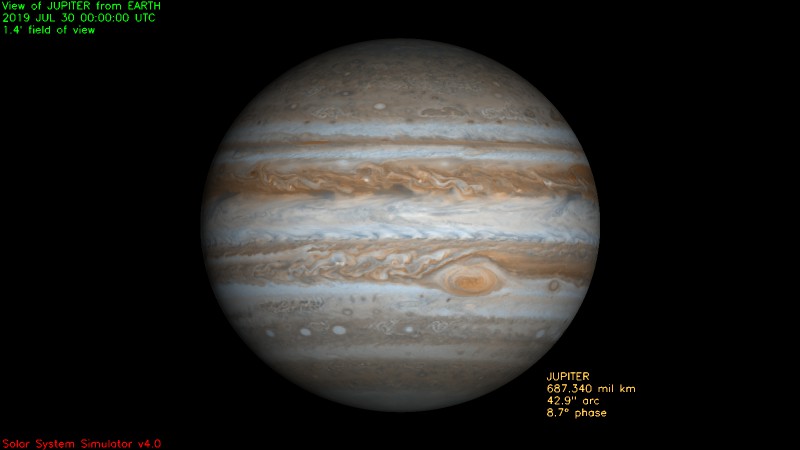
Fabulous viewing of Jupiter and Saturn tonight with his NexStar 130 SLT and the lenses our dear friends gave us (one advantage of driving to Indiana, I could bring more stuff).
I have finally, definitely, seen the Great Spot! In our view Jupiter was inverted as in the image just above, but the 2 major cloud bands and the Great Spot were clearly visible! (As were all 4 Galilean moons.)

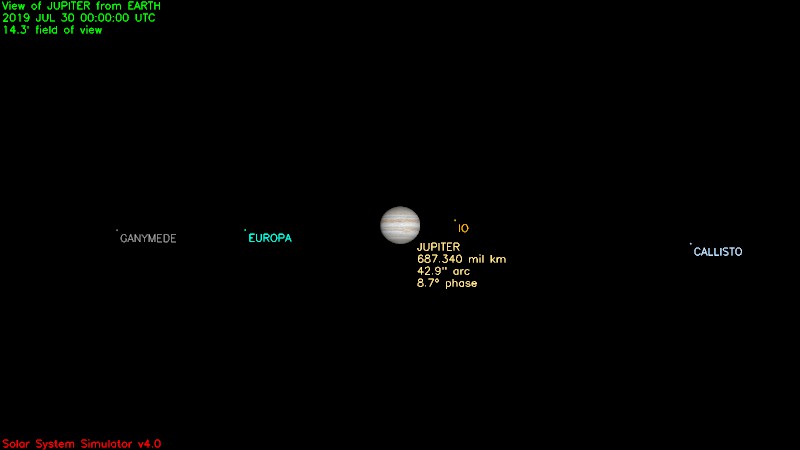
Saturn and Titan made for a fine sight as well.
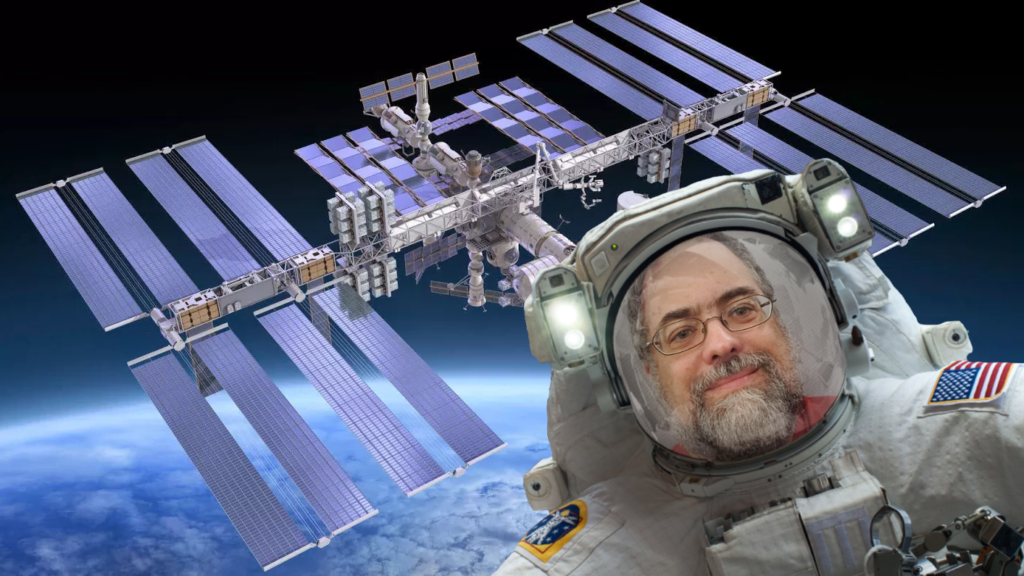
For my entire life, I have been “crazy to get to space” Very soon, NASA is making it be possible, for the mere cost of $50,000,000 plus $35,000/night (expected). Help me fulfill this lifelong dream.
Donate at https://www.gofundme.com/have-space-suitwill-travel.
Remember Scotty’s remark about his nephew in Star Trek II: The Wrath of Khan? (No, of course you don’t.) Scotty explains to Kirk, after an inappropriately emotional response by Midshipman Preston: “My sister’s youngest, Admiral. Crazy to get to space.”
Although I never pursued a career as an astronaut, I certainly remain, “Crazy to get to space,” and the description from Khan still resonates with me. I may yet get there, in my lifetime, especially with companies like SpaceX competing to make the cost of getting to orbit as low as possible.
For now, I’m going to have to settle for a proxy. Eliszabeth* MacDougal, one of the human family members I inherited when I married Sarah Latimer, has a friend, Cian Branco, who offered her the chance to send something small up on the Terrior Improved Orion rocket as part of the RockSat-C program. Eliszabeth realized this would be thrilling to me, and passed along her opportunity.
I ordered a new Lego R2-D2 minifigure, and a few parts to complete another mini-me as an astronaut, and shipped them off to Eliszabeth. They will be going up on Thursday, June 23, 2016, somewhere between 6:00 and 10:00 am, from the NASA facility at Wallops Island, Virginia. (My son, David, and I stood on our roof in the cold in October, 2014, to watch a night launch from Wallops.)
Geeking out!
Thank you, Eliszabeth!
New: I have just learned that my minifigs will have company on this voyage: Benny, from The Lego Movie will also be on this flight.
———————–
*Yes, this is the correct spelling.
————————
Update: (June 23, 2016)
:: sigh :: Postponed until tomorrow.
————————
Update: (June 24, 2016) I got up early to watch the launch today! In my mind, I was thinking, Saturn V. Long, slow acceleration. This is, uh, quite a bit smaller, and it zoomed upward so quickly I missed the rocket itself in the launch video screen capture. (The video will be posted soon by NASA/Wallops, anyway.) The crew was worried about missing the launch window due to weather, and debated skipping the camera alignment step. In addition to the pad camera, there was a UAV (drone) flying around, as some of the pictures below show.
The rocket got to its apogee of 119.08 km (74.0 miles) almost immediately. The payload detached successfully, and hit splashdown in the Atlantic, where it would be recovered, only 8 or 9 minutes later.
Very exciting! I reiterate my gratitude.
Here’s the official NASA post: NASA Successfully Launches Suborbital Rocket from Wallops.
————————
Update: (June 24, 2016, 16:05) Just got the official word from Cian: “Hey Doug, will send pics a bit later, currently wrecked. Your minis all went up and returned fine. I have pics of reintegration. Cheers!”
————————
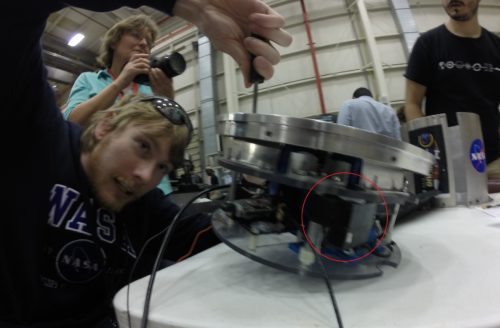
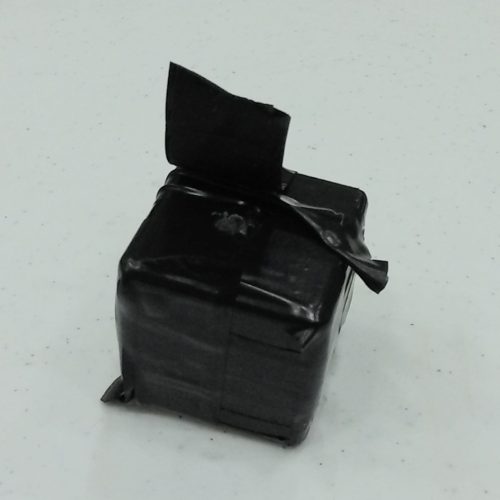
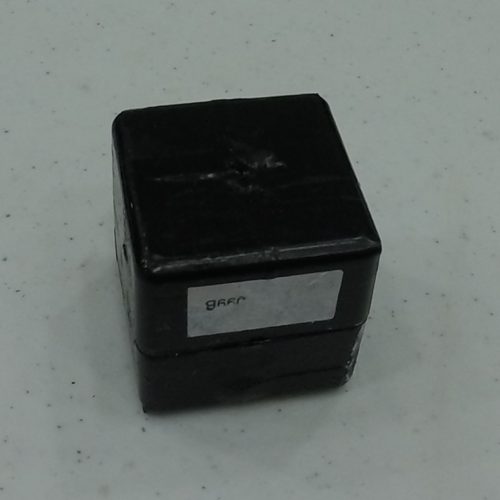

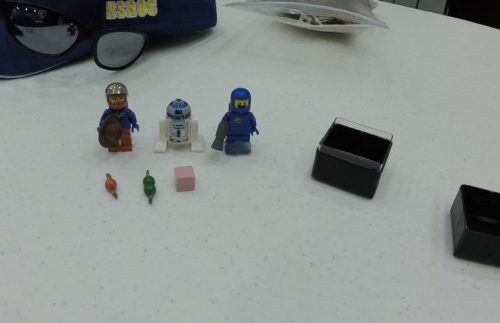
Video of the Launch:
Video from an observer to whom I am grateful.
Here is the launch from the NASA/Wallops feed!
“Space,” [The Hitchhiker’s Guide to the Galaxy] says, “is big. Really big. You just won’t believe how vastly, hugely, mindbogglingly big it is. I mean, you may think it’s a long way down the road to the chemist’s, but that’s just peanuts to space, listen …
Inspired by this NASA Web page, and Miss Sarah’s work-related interest in space science (too bad she spent all those years not reading science fiction), we decided to lay out our solar system in a manageable scale, complete with to-scale outlines of each planet.
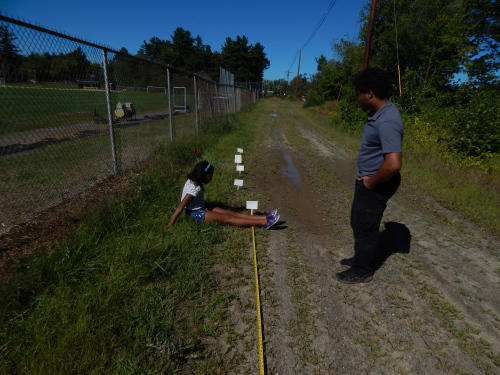
(Naomi plants herself just outside the orbit of Mars.)
Here are the scale sizes and distances, along with the real distances.
| Body | Diameter (mm) | Avg. Distance (yards) |
Distance (in) | Avg. Distance in AUs |
km | miles |
|---|---|---|---|---|---|---|
| Sun | 17.00 | 0.0 | 0.0 | 0.0 | 0 | 0 |
| Mercury | 0.06 | 0.8 | 28.8 | 0.4 | 58,000,000 | 35,000,000 |
| Venus | 0.15 | 1.4 | 50.4 | 0.7 | 108,000,000 | 67,000,000 |
| Earth | 0.16 | 2.0 | 72.0 | 1.0 | 150,000,000 | 93,000,000 |
| Mars | 0.08 | 3.0 | 108.0 | 1.5 | 228,000,000 | 142,000,000 |
| (Asteroids) | 0.00 | 4.0 to 8.0 | 144.0 to 288.0 | 2.0 to 4.0 | 450,000,000 | 279,000,000 |
| Jupiter | 1.75 | 10.5 | 378.0 | 5.2 | 778,000,000 | 484,000,000 |
| Saturn | 1.47 | 19.0 | 684.0 | 9.5 | 1,427,000,000 | 887,000,000 |
| Uranus | 0.62 | 38.0 | 1,368.0 | 19.0 | 2,871,000,000 | 1,784,000,000 |
| Neptune | 0.60 | 60.0 | 2,160.0 | 30.0 | 4,498,000,000 | 2,795,000,000 |
| Pluto (avg) | 0.03 | 79.0 | 2,844.0 | 39.5 | 5,906,000,000 | 3,670,000,000 |
| Voyager 1* | See http://voyager.jpl.nasa.gov/where/ | 138.4 | 20,707,634,708 | 12,867,127,667 | ||
| Voyager 2* | for current locations of Voyager 1 and Voyager 2. | 114.2 | 17,089,103,421 | 10,618,676,567 | ||
*Distances of Voyager 1 and 2 are as of May 2, 2017.
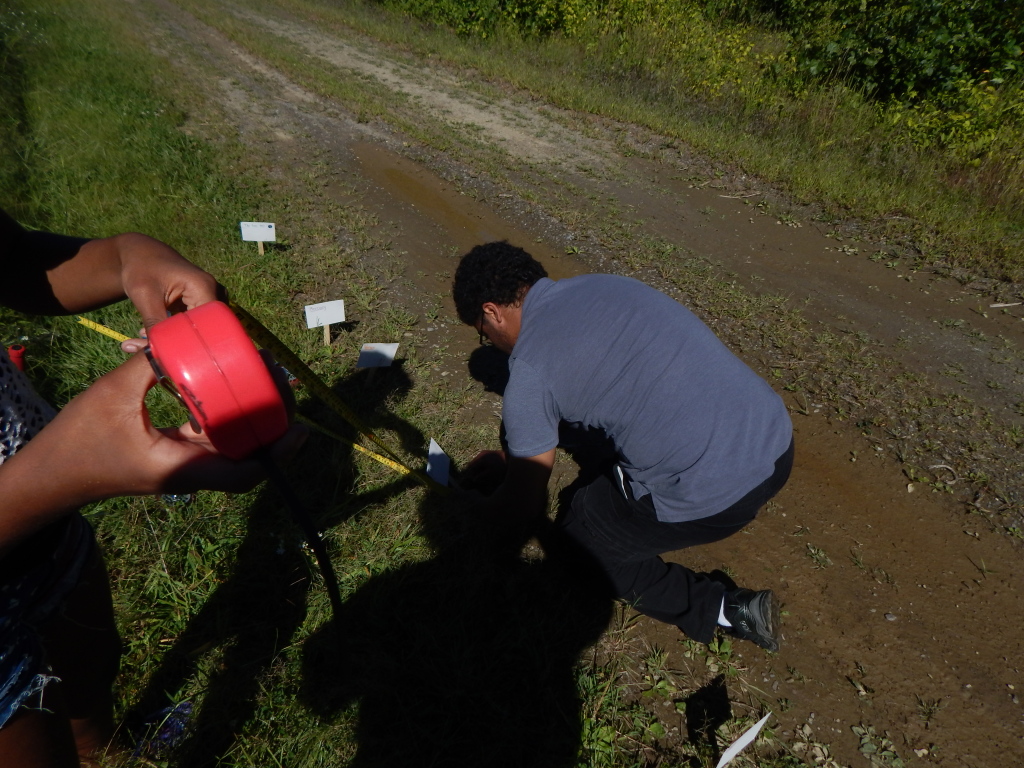
Isaac and Naomi lay out the inner planets.
I’ve made a Google Sheets spreadsheet with this data publicly available, here.
You can also grab and print this Acrobat/PDF file which has the sun and planets to the same scale as the planetary distances: planets_to_scale.pdf. At this scale, the sun is only 17 mm in diameter, Jupiter is tiny, and the inner planets are nearly invisible.

(“It’s cold outside, there’s no kind of atmosphere, I’m all alone, more or less …”)
Now, are you ready to have your mind blown?
Our nearest neighboring star is a binary star, Alpha Centauri. It would be, if we could see it from the northern hemisphere. It’s about 4.3 light years (271,930.8 AUs; 25,277,549,200,000 miles; 40,680,272,100,000 km) away.
At the scales we’re dealing with, how far away do you think Alpha Centauri would be?
Think carefully. When you’re sure, follow this link for the answer.
Space … is … big.
Okay, I’m being lazy today … so much I ought to write about, but I’ll just post “‘Me, too!’ like some brain-dead AOL-er.”
Perspective via a sort of palindrome. (Brought to my attention by Paul Weston.)
Homeschoolers versus the Home-Schooled.
The Known Universe: In Persepctive.
In 2029, the 900-foot asteroid Apophis, will miss Earth by only about 18,000 miles. To put that in contrast, the moon is an average of 238,857 miles away, center-to-center, or about 234,000 miles surface-to-surface. (The moon, of course, has a slightly elliptical orbit, so that’s just an average.) If that doesn’t set up the right mental image, take a look at the animation below, from an article on Wired Science.
Below you’ll see some beautiful video compiled from the STS-129 mission launch. (STS stands for space transportation system, and is the designation for NASA’s own Space Shuttle.
STS-129 Ascent Video Highlights from mike interbartolo on Vimeo.
STS-129 video highlights as compiled by the SE&I imagery team here at JSC from all of the ground, air, ET and SRB assets.
“The heavens declare the glory of God, and the sky above proclaims His handiwork.” (Psalm 19:1, ESV)

A sample: colliding Antennae Galaxies (NGC 4038/NGC 4039)
Check out the 2008 Hubble Space Telescope Advent Calendar; a new HST image will be posted each day through tomorrow.
This story about duct tape use on the moon was simply too good to pass up on cross-posting.
[I]n [the] Taurus-Littrow [valley, in the Sea of Serenity, on the moon] a missing fender was a potential disaster. The reason is moondust. When a rover rolls across the lunar surface, it kicks up a plume of moondust in its wake. (Astronauts called them “rooster tails.”) Without a fender, the rover would be showered by a spray of dark, abrasive grit. White spacesuits blackened by dust could turn into dangerous absorbers of the fierce lunar sun with astronauts overheating inside. Sharp-edged dust wiped off visors would scratch the glass, making helmets difficult to see out of. Moondust also had an uncanny way of working itself into hinges, latches and joints, rendering them useless.
Cernan: “And I hate to say it, but I’m going to have to take some time to try … to get that fender back on. Jack, is the tape under my seat, do you remember?” (He’s referring to a roll of ordinary, gray duct tape.)
Star Wars:
Weather Control:
Natural Disasters:
Tall Buildings:
Robotics (especially for Neal Stephenson fans):
Space Slide Shows: